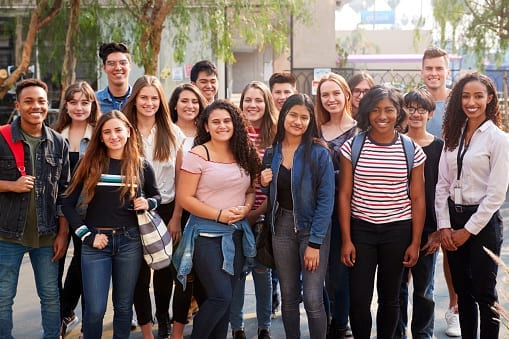
Overcoming Obstacles: Improving an F Rating in a High-Trauma School
In an interview for the NAESP Center for Innovative Leadership, Andy Jacks and Hamish Brewer talk with Florida principal Cindy Emerson about helping students who’ve experienced trauma and improving an F rating.
Topics: Curriculum and Instruction, Mental Health and Safety, Family and Stakeholder Engagement, Principal Leadership, School Culture and Climate, School Management, Teacher Effectiveness
Cindy Emerson, principal of Vero Beach Elementary School in Vero Beach, Florida, understands that we’re all human and we’re all overcoming obstacles. She takes this sentiment into her school every day as she works with her students and staff.
As Emerson and her assistant principal took over the school mid-year almost four years ago, Emerson noted the school had a lot of trauma and 17 unstable classrooms with daily rotating substitute teachers.
Since then, she and her faculty and staff have turned the school from an F to a C school—and their upward momentum isn’t stopping anytime soon.
The Challenges:
- How do I help students overcome trauma in a high-trauma school?
- How can I enlist faculty, staff, and the community to improve a school with an F rating?
What You’ll Learn
Principal Spotlight:
Cindy Emerson
Principal, Vero Beach Elementary School in Vero Beach, Florida
Twitter: @Emersizzle and @verobeachelemCindy is principal of Vero Beach Elementary School in Vero Beach, Florida, where she loves her work because it’s a way for her to give back to her community. Since she took the helm at Vero Beach, she and her teachers have turned this high-trauma school from an F to a C school—and their upward momentum isn’t stopping anytime soon. When she’s not at school, you’ll likely find her, her firefighter husband, and her two sons navigating the ocean in their boat on their way to and from the Bahamas.
In this video, Emerson takes you on a virtual tour of her school to show how she and her faculty and staff help students who’ve experienced trauma and improved an F rating. From Emerson, you will learn ideas to:
Enlist the community as part of the solution.
- Right when families walk up to the school they know the vision and mission of the school—because it’s posted on the door. Because families can see what the school is working toward, they become a part of that mission, too. Once they’re inside the walls of the school, families should be given a voice in what they’d like to see happen at the school.
- Bring the school spirit into the community. At staff retreats, Emerson gives out school apparel she encourages her staff to wear when they’re not at the school. It lets community members see that the school staff is proud of the school and the work they’re doing to help students succeed.
Build excitement around learning.
- The Book Snap of the Day encourages excitement around literacy. In 30 seconds, students give an overview of the book their reading—using a filter like puppy ears, of course. Because what fun is Snapchat if you don’t give yourself dog ears?
- If students could read, they would, says Emerson. In her town, students didn’t have easy access to books, so she made it her passion project to fix that. She used grant money to bring in a Scholastic book fair and let every single student choose 11 books to keep. This wasn’t just a treat for students: A problem with a lot of new staff is that they don’t have robust classroom libraries, says Emerson, so she set up a second Scholastic book fair, where teachers each were allowed to take $400 in books to fill out their classroom libraries. How can you do this in your school? Reach out to your communities and companies that want to help but don’t know how. And go—run, says Emerson—to Scholastic warehouse book sales.
Set intentions—and make them known.
- Inside the doorway at Vero Beach Elementary School, you’ll see photos of the faculty and staff holding up pieces of paper on which they’ve written their one-word intention for the year. It’s a visual way to make sure families and students know what each member of the school team is working toward for the year. Bonus? Emerson says it holds them accountable to the word they’ve chosen because the photos serve as a reminder when they walk by the board.
- A Golden Arrow award lets peers recognize peers among the staff. Three staff members are recognized for their contributions every month during staff meetings, and their photos are posted in the school hallways with a note about how they went above and beyond to show love and support to students. Then next month, those three recipients choose three more staff members to recognize.
Make use of all learning spaces.
- When Emerson inherited the school, it was a newly renovated space, but it didn’t make any use of the space to encourage learning outside of the classroom. With this, Emerson saw an opportunity to create learning spaces using walls of the halls—and even the stairs—with messages of encouragement and with additional lessons they don’t get in the classroom.
Takeaways:
- Turning around a school is about the whole child, not just improving test scores.
- It’s not about having all the answers. It’s about recognizing that everyone—including families—is growing and is a valuable part of the growth process.
- Don’t become desensitized or numb to what you see—what students are going through, like trauma—day in and day out.
Share your strategy: How have you transformed a school space to celebrate students? Go to the NAESP CIL webpage to tell us—and you could be one of the next principals we profile.

